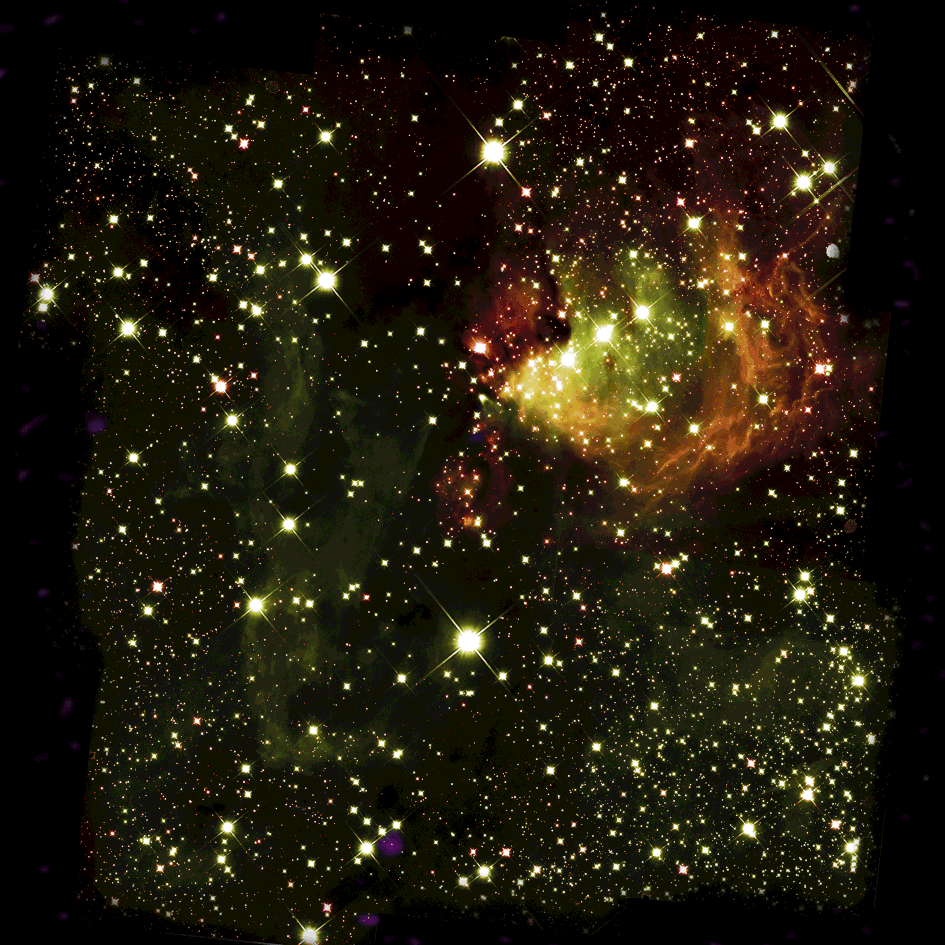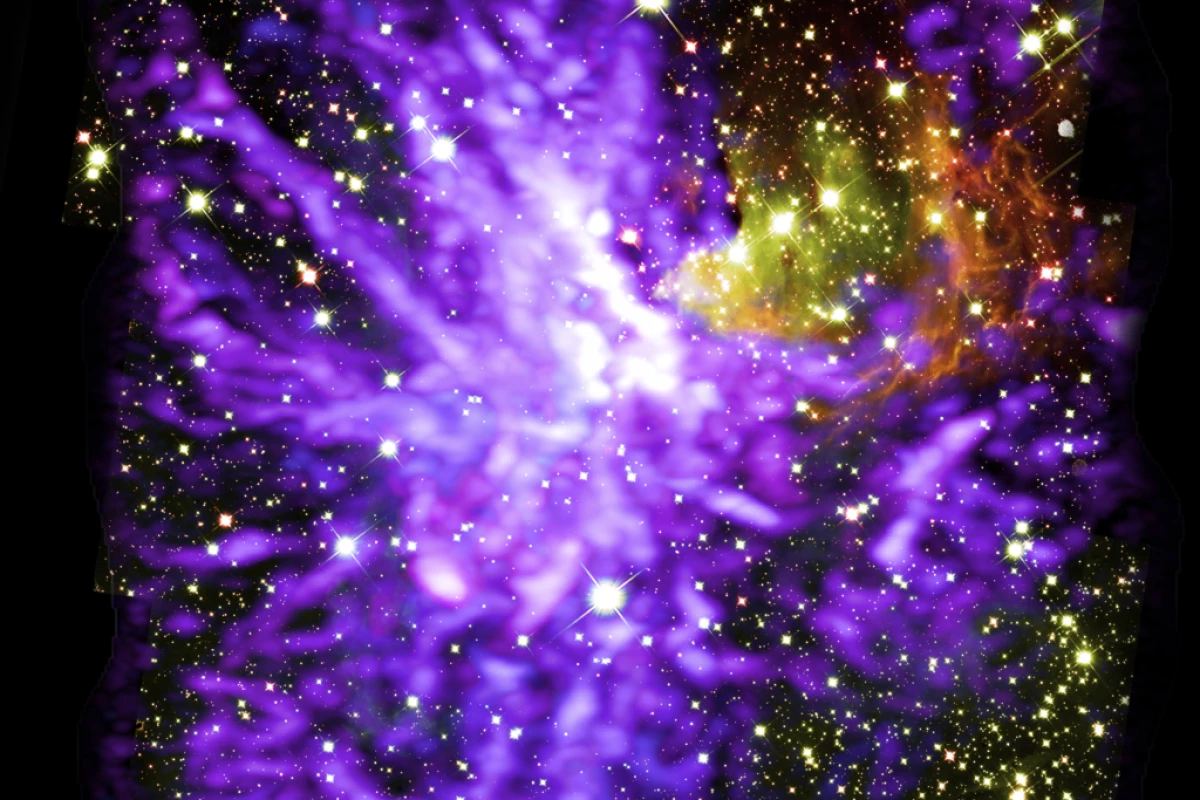Astronomers are celebrating the 4th of July weekend in their own trademark fashion – by releasing a new image of some cosmic fireworks. The spectacular shot is made up of a mosaic of radio and infrared images, showing a cluster of young stars exploding into life.
The image captures a cluster called G286.21+0.17, located about 8,000 light-years from Earth in the Carina region of the Milky Way. There, stars are forming in dense molecular clouds, as pockets of dust and gas collapse and fire up under intense heat and pressure.
Taking a snapshot of this process in action required two telescopes imaging different electromagnetic wavelengths. The Atacama Large Millimeter/submillimeter Array (ALMA) captured over 750 individual radio observations, while Hubble took nine infrared images of the same region.
Together the two instruments paint a fascinating picture of what’s happening. ALMA’s contributions can be seen in purple, representing the molecular clouds that are in the process of forming new stars. Those stars are where Hubble shines, capturing their infrared light in red and yellow.

In this shot, around a thousand newly-formed stars can be seen, including a large group of them bursting out of the cloud, in the upper right of the image. The energy and radiation they’re giving off is beginning to clear the clouds. The team says that the rest of the clouds look like they have enough mass to continue the process for another million years or so.
“This illustrates how dynamic and chaotic the process of star birth is,” says Jonathan Tan, co-author of the study. “We see competing forces in action: gravity and turbulence from the cloud on one side, and stellar winds and radiation pressure from the young stars on the other. This process sculpts the region. It is amazing to think that our own Sun and planets were once part of such a cosmic dance.”
The research was published in two papers in the Astrophysical Journal.




